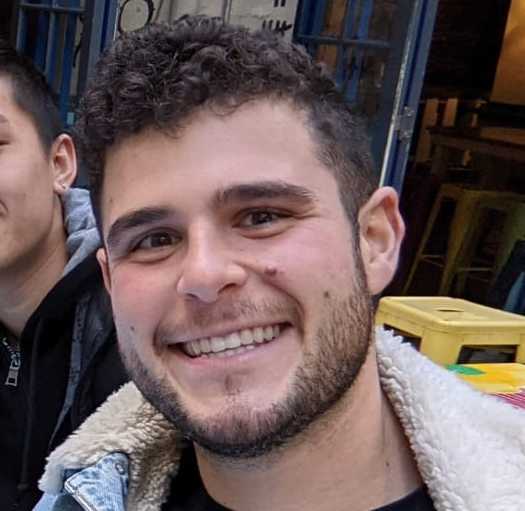





[{"address":"100 Cumberland St","location":{"longitudeDelta":0.10218818160659443,"latitudeDelta":0.09219986310369421,"latitude":-33.85978751729437,"longitude":151.2068422797935},"media":[{"type":"text","content":"# Byrne's House"},{"type":"img","content":"https://firebasestorage.googleapis.com/v0/b/freeguides-prod.appspot.com/o/assets%2Ftours%2FjHAYKHon6NyFVnqM96wv%2FIMG_2762.jpg?alt=media&token=ac2458f9-7ae8-42a2-a2ff-ef1805284a9f"},{"type":"text","content":"Upon entering the YHA Hostel, to your left you will see the remnants of the Byrne family home. This is the first stop of the tour.\n\nFor some background information, the Rocks used to be known as Tallawoladah by the Gadigal people. This was prior to European settlement. While the Big Dig did not recover anything from before convict settlement in the area, a campfire dating to around 300 years before European arrival was found on Cumberland Street. The Big Dig site revealed a lot more about convicts who had lived in the area.\n\n"},{"type":"img","content":"https://firebasestorage.googleapis.com/v0/b/freeguides-prod.appspot.com/o/assets%2Ftours%2FjHAYKHon6NyFVnqM96wv%2FIMG_2771.jpg?alt=media&token=27e60d63-c9e5-4472-9ed9-a5919201a86a"},{"type":"text","content":"When convicts first started being sent to Sydney, there were three types of towns: military, government, and convicts. The prisoners were expected to build their own housing in their regulated neighborhood, so even though they were granted more freedom than in a traditional prison, the Rocks’ geography kept anyone from trying to escape."},{"type":"img","content":"https://firebasestorage.googleapis.com/v0/b/freeguides-prod.appspot.com/o/assets%2Ftours%2FjHAYKHon6NyFVnqM96wv%2FIMG_2768.jpg?alt=media&token=7fe3fb17-539c-4c85-b79b-4a982a113018"},{"type":"text","content":"The site before us is the remnants of the house belonging to Margaret and Richard Byrne. This couple came to Australia in 1805. Richard was an Irish rebel as well as a stonemason. Using his technical skills, Richard helped construct a house that was considered home to the couple and their seven children. While Richard was pardoned in 1812, he continued to live in the house until his death in 1841. Richard passed away at the age of 67. Margaret passed away in 1854. From general wear and tear of the house, her sons’ decided to sell their childhood home in 1858, where it was soon demolished."},{"type":"img","content":"https://firebasestorage.googleapis.com/v0/b/freeguides-prod.appspot.com/o/assets%2Ftours%2FjHAYKHon6NyFVnqM96wv%2FIMG_2772.jpg?alt=media&token=2d6fb653-ba37-42bc-862c-ff1e28244358"},{"type":"text","content":"Before you, you can see the remnants of the foundation of the house and the collection of items left behind help us gain insight into what life looked like at the time for the Byrne family."},{"type":"video","content":"https://firebasestorage.googleapis.com/v0/b/freeguides-prod.appspot.com/o/assets%2Ftours%2FjHAYKHon6NyFVnqM96wv%2FIMG_2774%202.mov?alt=media&token=f616ee70-59c0-43b6-ab67-95d213464ea5"},{"type":"text","content":"From what can be gathered from the archaeological site, it seems as if he quarried some of the area to help him build his house, a common practice among new settlers. The couple and their seven children lived in this house until the mid 1850s."}]},{"address":"Sydney Harbour YHA - The Rocks","location":{"longitudeDelta":0.10218818160659443,"latitudeDelta":0.09219986310369421,"latitude":-33.85993235157661,"longitude":151.2067864396597},"media":[{"type":"text","content":"# Berry's Bakery"},{"type":"video","content":"https://firebasestorage.googleapis.com/v0/b/freeguides-prod.appspot.com/o/assets%2Ftours%2FjHAYKHon6NyFVnqM96wv%2FIMG_2786.mov?alt=media&token=1b6ea238-8e89-4b09-8589-96fe3dcb1425"},{"type":"text","content":"Berry’s Bakery stood from 1836 to 1914. Thomas Share, the founder of the bakery took out a mortgage to build this shop. Until 1840, him and his wife Jane ran the bakery; however, the storefront was taken over by Jane’s brother, Berry. Soon after, the bakery was known as Berry’s Bakery. 36 years later, the building was leased to John Simpson, who utilized the space for a general store. Finally, from 1901, Side Hines ran a barber shop in the building as the area around him was being demolished. Berry’s Bakery building was one of the last standing buildings on the site, but it was eventually removed in 1915. "},{"type":"img","content":"https://firebasestorage.googleapis.com/v0/b/freeguides-prod.appspot.com/o/assets%2Ftours%2FjHAYKHon6NyFVnqM96wv%2FIMG_2787.jpg?alt=media&token=76d29750-731e-4f67-b30a-f6ba5b006f95"}]},{"address":"Sydney Harbour YHA - The Rocks","location":{"longitudeDelta":0.10218818160659443,"latitudeDelta":0.09219986310369421,"latitude":-33.85996042123445,"longitude":151.20687538822995},"media":[{"type":"text","content":"# Cribbs, Butcher Block, and Stable"},{"type":"img","content":"https://firebasestorage.googleapis.com/v0/b/freeguides-prod.appspot.com/o/assets%2Ftours%2FjHAYKHon6NyFVnqM96wv%2FIMG_2794.jpg?alt=media&token=58e551f0-4649-44f7-a97c-a3a814f93afc"},{"type":"text","content":"Take a careful look in the middle of this section of the dig site. Do you see the flat area with a cluster of cracked cobblestone? Archeologists believe this formation of rocks was once Cribb’s butcher block. During the dig, clues indicated this area was used to cut and sort through livestock. Bones, horns, and even a steel butcher knife were found surrounding the area. "},{"type":"video","content":"https://firebasestorage.googleapis.com/v0/b/freeguides-prod.appspot.com/o/assets%2Ftours%2FjHAYKHon6NyFVnqM96wv%2FIMG_2802.mov?alt=media&token=60ffb818-ab28-4d0c-a68d-8aa6ffeb107f"}]},{"address":"The Big Dig Archaeology Education Centre","location":{"longitudeDelta":0.10218818160659443,"latitudeDelta":0.09219986310369421,"latitude":-33.86018139070498,"longitude":151.20701583193474},"media":[{"type":"text","content":"# Cribb's House and Well"},{"type":"img","content":"https://firebasestorage.googleapis.com/v0/b/freeguides-prod.appspot.com/o/assets%2Ftours%2FjHAYKHon6NyFVnqM96wv%2FIMG_2811.jpg?alt=media&token=f7e49b0d-aec1-4922-8b07-66d588c44f6d"},{"type":"text","content":"George Cribb lived on the site between the 1800s and 1820s to serve a 14 year sentence. Like many of the convicts sent to Australia, he took advantage of the opportunities that came along with being in a new colony, and opened his own butchering business. It was during the Big Dig that many of the carcasses and bones which he buried were uncovered. In fact, these bones had been so toxic that it had poisoned his first water well. Neighbors, in addition to George, started using the well as a bin. When the archaeological dig began, many bones and hand painted Chinese porcelain dishes, along with a butcher’s knife and alcohol still were discovered."},{"type":"video","content":"https://firebasestorage.googleapis.com/v0/b/freeguides-prod.appspot.com/o/assets%2Ftours%2FjHAYKHon6NyFVnqM96wv%2FIMG_2808.mov?alt=media&token=5eeb32b5-fa0c-4226-8938-df6e49171712"},{"type":"text","content":"In addition to his time as a butcher, he also constructed a two story Georgian house. As his success continued to grow, he built a row of four tenements which he rented out to other convicts exiled to Australia. "},{"type":"video","content":"https://firebasestorage.googleapis.com/v0/b/freeguides-prod.appspot.com/o/assets%2Ftours%2FjHAYKHon6NyFVnqM96wv%2FCribbs%20House.mp4?alt=media&token=dd88b1b3-15e3-468e-904b-8fac04946c23"},{"type":"text","content":"In the 1820s, George had difficulties with law enforcement once more. It was believed that he was dealing with illegally produced alcohol. Unfortunately, no evidence was found at the time to make a conviction. 180 years later though, during the archaeological dig, evidence that would have found him guilty was discovered. During this time, George also faced financial difficulties, and was forced to declare bankruptcy. His property was purchased by “Raine & Ramsey” who divided his property and made it subdivided lots. In 1830, George’s home was converted into a hotel known as the Whalers Arms Hotel. "}]},{"address":"58A Gloucester St","location":{"longitudeDelta":0.10218818160659443,"latitudeDelta":0.09219986310369421,"latitude":-33.860109871773616,"longitude":151.20721200546132},"media":[{"type":"text","content":"# Interpretive Panel of the Whalers Arms"},{"type":"img","content":"https://firebasestorage.googleapis.com/v0/b/freeguides-prod.appspot.com/o/assets%2Ftours%2FjHAYKHon6NyFVnqM96wv%2FIMG_2838.jpg?alt=media&token=e59ab3c7-d1e3-4666-b909-42b5eedbb023"},{"type":"text","content":"Like at the front of the hostel, the backside also mimics what the buildings would have looked like in the 1800s. Notice there are outlines of windows, steps, and doors. Also, notice the branding that would have been on the front of the buildings. "},{"type":"video","content":"https://firebasestorage.googleapis.com/v0/b/freeguides-prod.appspot.com/o/assets%2Ftours%2FjHAYKHon6NyFVnqM96wv%2F3BC2AF29-5B69-4ECB-8137-FCCAC443A94E.mov?alt=media&token=12503a43-4341-4dd6-931d-abab7297fd56"}]},{"address":"110 Cumberland St","location":{"longitudeDelta":0.10218818160659443,"latitudeDelta":0.09219986310369421,"latitude":-33.86006262343503,"longitude":151.20711142262326},"media":[{"type":"text","content":"# Ann Armsden's Home"},{"type":"text","content":"Ann Armsden, unlike many of the convicts sent to Sydney, was determined to turn her life around. She was convicted of highway robbery and was sentenced to be hung. Fortunately, she was sent to Sydney for 14 years instead. After nearly facing death, she used her time in the city to make a name for herself and left her criminal life behind. "},{"type":"img","content":"https://firebasestorage.googleapis.com/v0/b/freeguides-prod.appspot.com/o/assets%2Ftours%2FjHAYKHon6NyFVnqM96wv%2FIMG_2842.jpg?alt=media&token=665d2b9a-8a2f-4558-abc2-c6b1d92ab379"},{"type":"text","content":"Due to the time period, which was the late 1700s to early 1800s, she was often objectified and viewed as only needed to satisfy sexual needs. There was a myth that had been circulating at the time saying that convict women had an orgy during a rainstorm, and this bad reputation stuck."},{"type":"video","content":"https://firebasestorage.googleapis.com/v0/b/freeguides-prod.appspot.com/o/assets%2Ftours%2FjHAYKHon6NyFVnqM96wv%2FIMG_2843.mov?alt=media&token=2a77d500-3cbe-4ad3-9d81-7cca35432b8b"},{"type":"text","content":"Ann was one of the first convicts to build a house on the Big Dig site, and lived there until she met an escaped convict on an island before deciding to move there permanently. When the government gave them permission to return to the UK, the ship captain refused to let women board. Her husband, loyal to their relationship, decided to stay in Sydney with Ann, before passing away from a drowning incident due to a boating accident. Ann soon remarried to a baker. It is assumed that there was a bakery in the back of the house, due to the findings of a large fireplace and pottery. "}]},{"address":"110 Cumberland St","location":{"longitudeDelta":0.10218818160659443,"latitudeDelta":0.09219986310369421,"latitude":-33.860048307929354,"longitude":151.2070627705925},"media":[{"type":"text","content":"# Foy House"},{"type":"img","content":"https://firebasestorage.googleapis.com/v0/b/freeguides-prod.appspot.com/o/assets%2Ftours%2FjHAYKHon6NyFVnqM96wv%2FIMG_2847.jpg?alt=media&token=ecf58afe-74bc-472c-9a14-42f5316bd84f"},{"type":"text","content":"From the 1880s to the 1900s, the Foy family lived in The Rocks–which at the time was considered the slums of Sydney. Soon after living there, the bubonic plague began to spread, so citizens started destroying buildings and homes in an attempt to stop the spread of the disease. \n\nOne of the family members, James Foy, aged 15, contracted the bubonic plague during this time. James was one of the three that died from the bubonic plague in The Rocks. However, it was most likely contracted at his job as a paperboy.\n\nAlthough residents were demolishing The Rocks area, the Foy’s home was not destroyed–despite its status as a ‘plague’ house. The building remained standing until 1915. \n\nThe remains of the Foy’s Home also led archeologists to more information about the father and the time period. The 1994 excavation discovered a Sydney Wharf Labourers’ Union token from the years of 1902 and 1903. This token belonged to the father of the home, James Foy, and discoverers believe his life was completely turned upside down within these few years. Not only did his son die, but he also lost his job as a coal lumper. Lastly, the town he resided in was destroyed. "}]},{"address":"100 Cumberland St","location":{"longitudeDelta":0.10218818160659443,"latitudeDelta":0.09219986310369421,"latitude":-33.85980259143178,"longitude":151.20713614302863},"media":[{"type":"text","content":"# Roof of YHA Hostel"},{"type":"img","content":"https://firebasestorage.googleapis.com/v0/b/freeguides-prod.appspot.com/o/assets%2Ftours%2FjHAYKHon6NyFVnqM96wv%2FIMG_2502.jpg?alt=media&token=2bbdccb6-19e1-481e-adc2-67aeea26235e"},{"type":"text","content":"We are nearing the end of this tour. Please make your way into the main area of the hostel up to the roof. Feel free to look around and take the lift or stairs up to the roof. If you are a resident of the hostel, you have access to this area for lounging, socializing, games, and more.\n\nOnce you have reached the top, you will notice a miraculous view of the harbor, Sydney Opera House, bridge, and the Rocks area. Imagine this area of land filled with aboriginals, convict homes, the slums, and later, a growing city. \n\nTake a moment to acknowledge the Traditional Owners of the country throughout Australia, and in Tallawoladah, The Rocks, the Gadigal people of the Eora nation. Recognize their continuing connection to land, waters, and culture. Pay respects to their Elders past, present and emerging. "},{"type":"video","content":"https://firebasestorage.googleapis.com/v0/b/freeguides-prod.appspot.com/o/assets%2Ftours%2FjHAYKHon6NyFVnqM96wv%2FIMG_2420.mov?alt=media&token=06f8bf1c-f485-4658-a8ca-23f1e46f4ce1"}]},{"address":"102 Cumberland St","location":{"longitudeDelta":0.10218818160659443,"latitudeDelta":0.09219986310369421,"latitude":-33.859631605043916,"longitude":151.2068758074062},"media":[{"type":"text","content":"# Exit the Hostel"},{"type":"text","content":"Thank you so much for coming on this tour. We hope you learned a lot. If you are interested in learning more, please check out the old Australian Hotel located just down the street. \n\nThe founders of this hotel, Jane and Robert Berry, moved to Sydney when they were children in 1823. Jane married a man named Thomas Share, and opened a hotel called the Plymouth Arms just across the street with him. This was then converted into a bakery, which you saw earlier in the tour. \n\nFor additional information on what you saw today, check out the Rocks Discovery Museum or the two links below. "},{"type":"link","title":"","content":"https://thebigdig.com.au/thebigdig/ "},{"type":"link","title":"","content":"https://thebigdig.com.au/education/documentary/ "}]}]
- Self-Guided experience
- Run anytime, anywhere, 24/7, with your own phone
- Self-Guided experience
- Additional expenses such as food and drink
- Transport
History meets stunning views. Stay in our modern hostel amidst The Rocks' cobblestone streets. Explore Sydney's heritage, visit iconic landmarks, and soak in the harbor's beauty. Comfortable accommodations, friendly staff, and an unforgettable stay.
History meets stunning views. Stay in our modern hostel amidst The Rocks' cobblestone streets. Explore Sydney's heritage, visit iconic landmarks, and soak in the harbor's beauty. Comfortable accommodations, friendly staff, and an unforgettable stay.

Use your phone to explore a new city or your own home town.

You’re the boss. Start the experience virtually or at the start location. Initiate at a time that works for you.

Each experience is hand made by a real local or organisation who is uniquely knowledgeable.

Extend the relationship with your guests beyond the lobby and into the real world
Subscribe to Our Newsletter
Copyrights ©XXXX FreeGuides. All rights reserved.




.png?alt=media&token=777e983d-4937-48bd-8b90-52f6a7f7d2b8)





.svg)
.svg)
.svg)
.svg)